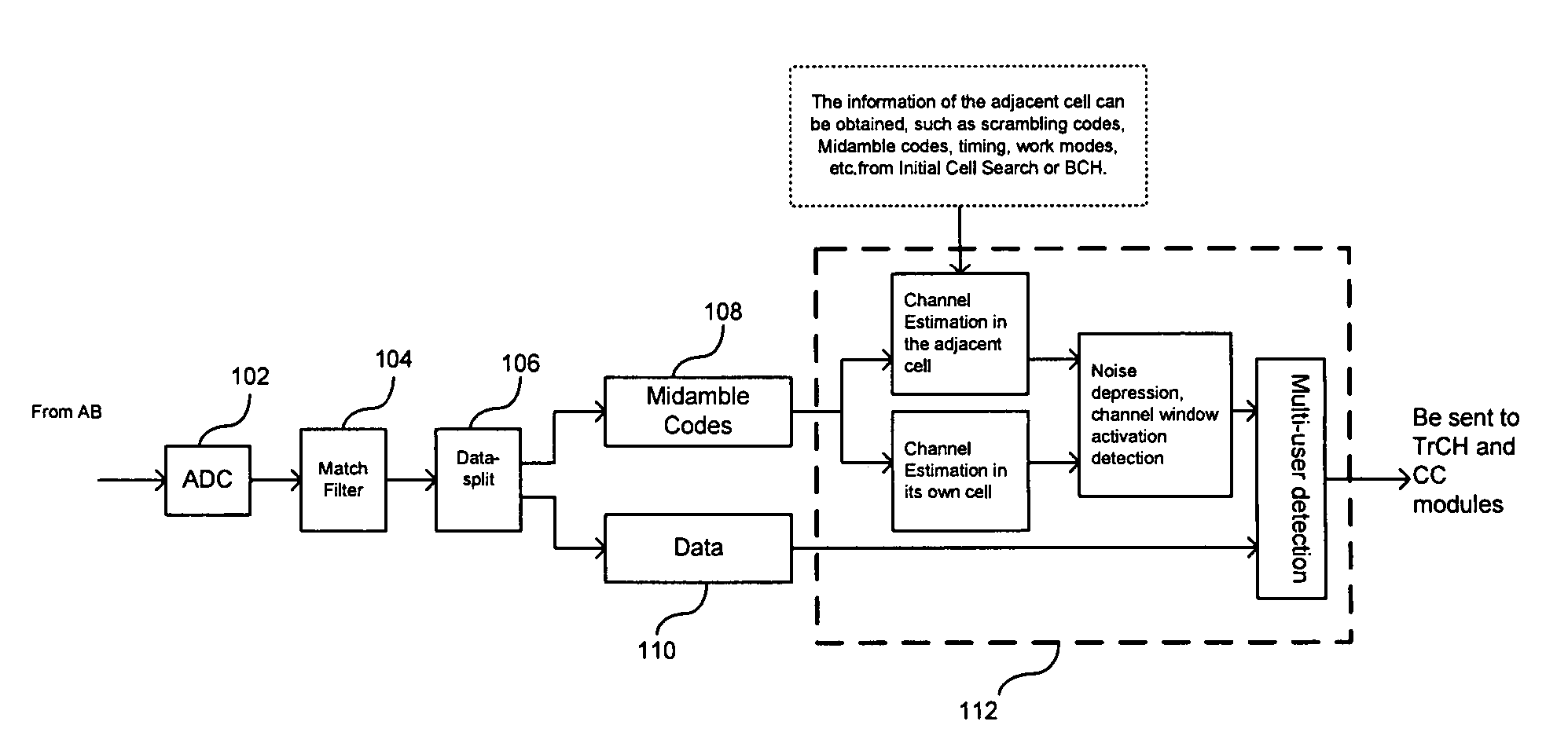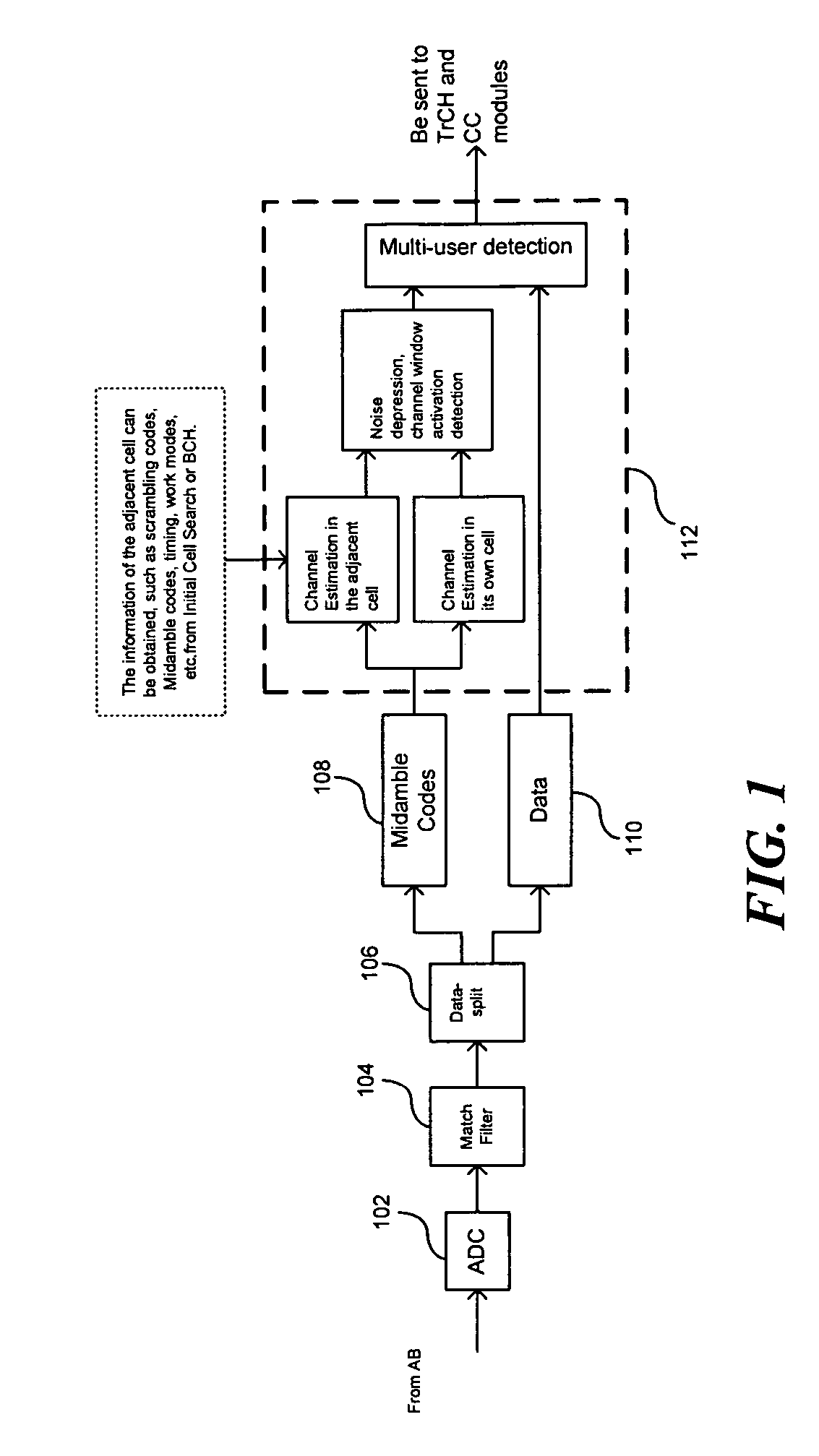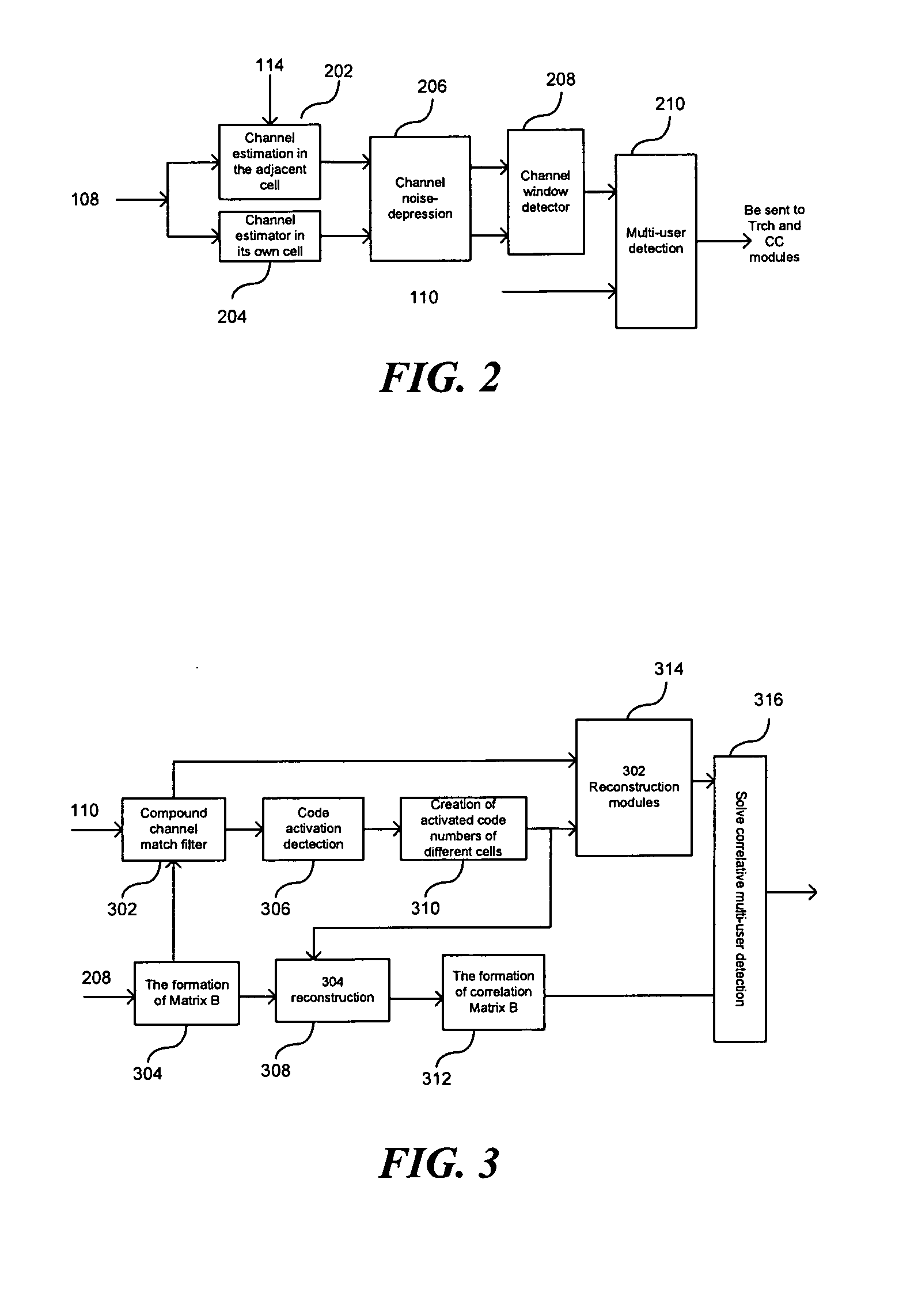Joint cell detection method in TD-SCDMA system
a detection method and communication system technology, applied in data switching networks, frequency-division multiplexes, instruments, etc., can solve the problems of mai (multi-access interference) among users, large noise of mai signals from other users, etc., and achieve the effect of improving performan
- Summary
- Abstract
- Description
- Claims
- Application Information
AI Technical Summary
Benefits of technology
Problems solved by technology
Method used
Image
Examples
Embodiment Construction
[0019]FIG. 1 illustrates a terminal receiver using joint cell detection according to the present invention. An analog baseband signal, from Analog Baseband (AB), is sent to Analog-Digital Converter (ADC) 102 and is then changed into a digital signal, which in turn is sent to Match Filter 104 (MF). The match-filter pulse-shape filters the signals on the transmitting end. In a 3G system, pulse-shaping filter on the sending end and match filter on the receiving end employ Root Raised Cosine (RRC) Finite Impulse Response (FIR) filters, with a roll-off coefficient α=0.22. The data after the match filter will be sent to data split modules 106 and is split into Midamble codes 110, used for channel estimation, and information data 108. Midamble codes and information data 110 and 108, combined with system information 114, will be transported to joint cell detector 112 and produce soft bits, which in turn are sent to Transport Channel Decoding (TrCH) modules and Channel Decoding (CC) modules....
PUM
 Login to View More
Login to View More Abstract
Description
Claims
Application Information
 Login to View More
Login to View More - R&D
- Intellectual Property
- Life Sciences
- Materials
- Tech Scout
- Unparalleled Data Quality
- Higher Quality Content
- 60% Fewer Hallucinations
Browse by: Latest US Patents, China's latest patents, Technical Efficacy Thesaurus, Application Domain, Technology Topic, Popular Technical Reports.
© 2025 PatSnap. All rights reserved.Legal|Privacy policy|Modern Slavery Act Transparency Statement|Sitemap|About US| Contact US: help@patsnap.com



